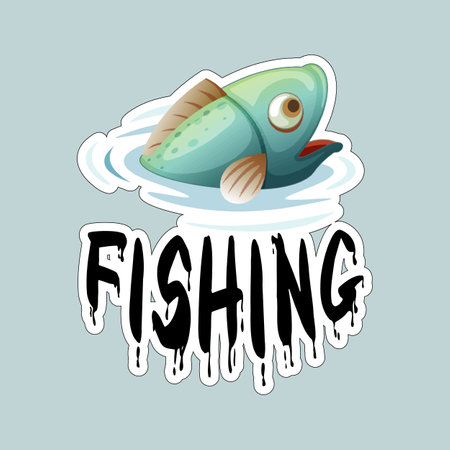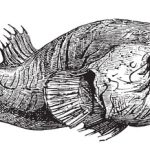1. Introduction to Saltwater Fly Fishing
Saltwater fly fishing in the United States has been gaining serious traction over the past few decades. While fly fishing is often associated with peaceful mountain streams and freshwater trout, an increasing number of anglers are discovering the thrill and challenge of targeting saltwater species along Americas vast coastlines. From the flats of Florida to the rocky shores of New England and the Pacific inlets of California, saltwater fly fishing offers a dynamic and exciting alternative to traditional freshwater fly fishing.
One key difference between saltwater and freshwater fly fishing lies in the environment and the fish youre targeting. Saltwater species tend to be larger, stronger, and more aggressive than their freshwater cousins. Combine that with ever-changing tides, wind conditions, and open water, and you’ve got a completely different angling experience that requires specialized gear, techniques, and knowledge.
Heres a quick comparison between freshwater and saltwater fly fishing:
| Feature | Freshwater Fly Fishing | Saltwater Fly Fishing |
|---|---|---|
| Common Locations | Rivers, lakes, streams | Oceans, bays, coastal flats |
| Typical Species | Trout, bass, panfish | Redfish, tarpon, bonefish, striped bass |
| Gear Requirements | Lighter rods (3-6 wt), smaller reels | Heavier rods (8-12 wt), corrosion-resistant reels |
| Challenges | Sight fishing in clear water; stealthy presentation | Tides, wind, large fish that run fast and hard |
| Rewards | Peaceful settings, technical casting practice | Pounding adrenaline rushes, big fights on the reel |
The growing popularity of saltwater fly fishing in the U.S. can be attributed to several factors. More anglers are seeking new challenges beyond their local rivers. Advances in fly rod and reel technology have made it easier to handle tough saltwater conditions. Plus, social media and outdoor TV shows have spotlighted epic battles with giant tarpon or cruising permit in crystal-clear flats.
If you’re looking for a fishing experience that combines technical skill with raw power and unforgettable scenery—from marshes in Louisiana to mangroves in the Florida Keys—saltwater fly fishing might just be your next adventure.
2. Essential Gear and Tackle for Saltwater Fly Fishing
Saltwater fly fishing in the USA demands specialized gear that can handle tough conditions, powerful fish, and corrosive saltwater environments. Whether youre targeting striped bass along the East Coast or bonefish in Florida, having the right equipment makes all the difference. Heres a breakdown of what youll need to get started.
Saltwater Fly Rods
Saltwater fly rods are built to be stronger and more durable than freshwater rods. They typically range from 8-weight to 12-weight, depending on the species youre targeting. A good all-around choice is a 9-foot, 9-weight rod, which offers a balance of power and control for many saltwater scenarios.
Rod Weight Guide
| Rod Weight | Best For |
|---|---|
| 8 wt | Redfish, Bonefish, Schoolie Striped Bass |
| 9 wt | Snook, Larger Redfish, Bluefish |
| 10 wt | Permit, False Albacore, Small Tarpon |
| 11-12 wt | Tarpon, Giant Trevally, Big Stripers in heavy surf |
Fly Reels with Corrosion Resistance
Your reel must be built to withstand saltwater. Look for models with sealed drag systems and anodized aluminum construction. A strong drag is essential when fighting fast-moving species like tarpon or false albacore.
Fly Lines for Saltwater Conditions
Sinking tips, intermediate lines, and floating lines each serve different purposes in saltwater fly fishing. Choose a line that matches your rod weight and intended target species. Most saltwater lines are designed with tropical coatings to resist heat and remain slick in warm weather.
Line Type Overview
| Line Type | When to Use It |
|---|---|
| Floating Line | Shallow flats fishing for bonefish or redfish |
| Intermediate Line | Slightly deeper water or windy conditions |
| Sinking Tip Line | Deeper channels or surf zones where you need to get flies down quickly |
Leaders and Tippets for Saltwater Species
Saltwater leaders are typically longer and stronger than those used in freshwater. Many anglers use tapered leaders between 9 to 12 feet in length with a heavier butt section to turn over large flies in windy conditions. Fluorocarbon tippets are preferred because they’re more abrasion-resistant and less visible underwater.
Tippet Strength Recommendations by Species
| Species | Tippet Size (lb) |
|---|---|
| Bonefish | 10–16 lb fluorocarbon |
| Redfish / Striped Bass | 16–20 lb fluorocarbon or mono |
| Pompano / Permit / Snook | 20–25 lb fluorocarbon with shock tippet if needed |
| Tarpon / Barracuda / Shark | 40–80 lb with bite tippet (wire or heavy mono) |
Must-Have Accessories for Saltwater Fly Fishing
- Pliers: Stainless steel or aluminum pliers with cutters for rigging and hook removal.
- Knot-tying tools: Handy for quick leader changes.
- New England (Massachusetts, Rhode Island)
- Long Island Sound (New York, Connecticut)
- Chesapeake Bay (Maryland, Virginia)
- Louisiana marshes
- Texas Gulf Coast
- South Carolina Lowcountry
- The Florida Keys
- Biscayne Bay (Miami area)
- Kona Coast (Hawaii)
- The Florida Keys (May–July prime season)
- Tampa Bay area
- Southeast Texas coastlines
- The Lower Florida Keys
- Cape Sable and Everglades National Park
- Boca Grande area
- Double Haul: Practice this to add power and distance to your casts.
- Sidearm Cast: Useful for keeping your line low and out of the wind.
- Quick Pick-Up and Lay Down: Helps when targeting fast-moving fish like bonefish or false albacore.
- Polarized Sunglasses: Crucial for spotting fish and reducing glare.
- Lead Your Target: Cast ahead of moving fish so your fly crosses its path naturally.
- Kneel or Stay Low: Helps avoid spooking fish in shallow water.
- Casting with the Wind: Use it to your advantage—cast lower with sidearm techniques.
- Casting Against the Wind: Shorten your leader and tighten loops for better control.
- Casting Across Current: Mend your line upstream after the cast to keep your fly drifting naturally.
- Use barbless hooks: They reduce harm to fish and make catch-and-release easier.
- Handle fish gently: Wet your hands before handling fish to protect their slime coat.
- Avoid overplaying fish: Fight them quickly and efficiently to prevent exhaustion.
- Never leave trash behind: Pack out all gear, line, and litter.
- Use appropriate tackle to land the fish quickly.
- Keep the fish in the water as much as possible.
- Remove the hook carefully using pliers or a dehooking tool.
- If needed, revive the fish by holding it upright underwater and gently moving it back and forth until it swims off on its own.
- NOAA Fisheries
- Florida Fish and Wildlife Conservation Commission (FWC)
- California Department of Fish and Wildlife (CDFW)
- Your local state’s fish and game department website

3. Top Saltwater Species to Target in the USA
Saltwater fly fishing in the United States offers an exciting range of game fish that challenge even the most seasoned anglers. From the rocky coasts of the Northeast to the warm flats of Florida and the Gulf Coast, fly anglers can pursue a variety of prized species. Here’s a look at some of the most popular saltwater game fish and where you’re most likely to find them.
Striped Bass
Striped bass, often called “stripers,” are a favorite target for saltwater fly anglers along the East Coast. They’re known for their aggressive strikes and strong fights, making them ideal for fly fishing. You can find them from Maine down to North Carolina, especially during their spring and fall migrations.
Regional Hotspots:
Redfish (Red Drum)
Redfish are incredibly popular in the Southeast and Gulf Coast regions. These fish thrive in shallow marshes and flats, making them perfect for sight fishing with a fly rod. Their tailing behavior in skinny water adds to the excitement.
Regional Hotspots:
Bonefish
If you’re looking for speed, bonefish are your go-to species. Known as “ghosts of the flats,” they are elusive and fast, offering an exhilarating challenge. Bonefish are mostly found in southern Florida and parts of Hawaii.
Regional Hotspots:
Tarpon
Touted as one of the ultimate saltwater fly fishing challenges, tarpon are massive, powerful fish that can jump several feet out of the water when hooked. They’re commonly targeted during seasonal migrations and require strong gear and nerves of steel.
Regional Hotspots:
Permit
Picky and powerful, permit are considered one of the most difficult fish to catch on a fly. They inhabit shallow flats in tropical waters and demand precision casting and stealthy presentation.
Regional Hotspots:
Species Summary Table
| Species | Main Regions | Main Season(s) | Main Challenge/Attraction |
|---|---|---|---|
| Striped Bass | Northeast Atlantic Coast (ME to NC) | Spring & Fall | Migratory runs, strong fights |
| Redfish (Red Drum) | Southeast & Gulf Coasts | Year-round (best in fall) | Sight fishing, tailing behavior |
| Bonefish | Southern Florida & Hawaii | Largely year-round (best spring/fall) | Sight casting, speed runs on flats |
| Tarpon | Southeast U.S., esp. Florida Keys | Late spring to early summer | Aerial acrobatics, large size |
| Permit | Southern Florida (Keys & Everglades) | Largely year-round (peaks vary by location) | Difficult to fool on fly, rewarding catch |
This variety of species across different coastal regions makes saltwater fly fishing in the USA both diverse and thrilling. Whether youre chasing stripers off Cape Cod or stalking permit in the Keys, each target species offers its own unique experience on the fly rod.
4. Techniques and Strategies for Success
Saltwater fly fishing in the USA isn’t just about having the right gear—it’s also about knowing how to use it. Whether you’re stalking redfish on a Gulf Coast flat or casting to stripers in the Northeast, mastering key techniques will boost your chances of hooking up. Here are some practical strategies to help you succeed on the salt.
Effective Casting Techniques
In saltwater fly fishing, distance and accuracy matter—especially when youre sight fishing. Wind is often a factor, so developing a strong double haul cast is essential. This technique helps you generate more line speed and cut through breezy conditions.
Tips for Better Casting:
Retrieval Methods That Work
The way you retrieve your fly can make all the difference. Different species respond better to certain retrieval patterns, from slow and steady strips to quick, erratic movements that mimic fleeing baitfish.
| Species | Recommended Retrieve |
|---|---|
| Striped Bass | Moderate to fast strip with pauses |
| Redfish | Slow strip or short twitches near bottom |
| Tarpon | Steady long strips; don’t stop when they follow |
| Barracuda | Fast, aggressive strips to trigger attack |
Smart Fly Presentation Tips
Your presentation should look as natural as possible. In clear water, fish can be spooky, so subtlety is key. Try landing your fly gently and leading the fish by several feet instead of casting directly at it.
Sight Fishing Essentials:
Tidal Awareness and Reading Water
Tides play a huge role in saltwater fly fishing success. Fish tend to feed more actively during moving water—especially on incoming tides that push baitfish into shallows. Learn how your local tides affect fish behavior in different areas like flats, inlets, or mangroves.
| Tide Stage | Fish Behavior |
|---|---|
| Incoming Tide | Bait pushed into shallows; great for sight fishing |
| High Tide | Fish may spread out; look near structure or mangroves |
| Outgoing Tide | Bait drains from flats; predators wait at drop-offs |
| Low Tide | Fish concentrated in channels; good time to wade deeper areas |
Casting in Wind and Current
The ocean isn’t always calm, so being able to adapt your technique is important. When dealing with wind, adjust your casting angle and use tighter loops. For strong current, choose heavier flies or sink-tip lines to get down where the fish are feeding.
Pro Tips:
Nailing these techniques takes practice, but once you get them dialed in, youll see more success—and have way more fun doing it.
5. Conservation, Ethics, and Local Regulations
Saltwater fly fishing in the USA is not just about the thrill of the catch—its also about protecting our coastal environments and fish populations for future generations. As anglers, its our responsibility to fish ethically, follow regulations, and respect local ecosystems. Heres what you need to know to be a responsible saltwater fly fisher.
Responsible Angling Practices
Being a responsible angler starts with preparation and awareness. Here are some key practices to keep in mind:
Catch-and-Release Techniques
If youre practicing catch-and-release, doing it right helps improve survival rates for released fish. Follow these steps:
Respecting Local Ecosystems
Every coastal region in the U.S.—from Florida’s mangroves to California’s kelp forests—has unique habitats that deserve protection. Avoid trampling sensitive areas like seagrass beds or coral reefs. Be mindful of wildlife such as nesting birds or marine mammals. Stick to established trails or boat routes when accessing fishing spots.
Federal and State Fishing Regulations
The U.S. has both federal and state regulations that vary by location and species. Its important to know the rules where youre fishing. Heres a quick guide by region:
| Region | Main Agencies | Common Regulations |
|---|---|---|
| Northeast (e.g., New York, Massachusetts) | NOAA Fisheries, State Fish & Wildlife Departments | Striped bass size limits, seasonal closures |
| Southeast (e.g., Florida, Georgia) | Florida Fish & Wildlife (FWC), NOAA Fisheries | Permit tags for tarpon, gear restrictions in flats |
| Gulf Coast (e.g., Texas, Louisiana) | Texas Parks & Wildlife, Gulf Council | Redfish slot limits, closed seasons for snapper |
| West Coast (e.g., California, Oregon) | California Department of Fish & Wildlife (CDFW) | No targeting of certain protected species like steelhead in saltwater; MPAs with strict rules |
Where to Find Regulation Info
You can check up-to-date regulations through official websites like:
Tip:
Always carry a copy of current regulations or have a mobile app from your state agency while on the water.
The more we understand and respect conservation practices and local laws, the better our chances of preserving saltwater fly fishing opportunities across Americas beautiful coasts.


